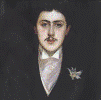Modern Languages and Literatures, Department of

French Language and Literature Papers
Document Type
Article
Date of this Version
September 2007
Abstract
The problematic reaction that pornography evokes as both a literary and cultural construct stems partially from the fact that it is as antimodern as it is modern. This paradox is implicitly outlined in Lynn Hunt's definition of pornography. The ironically traditional, if not presumably timeless, quality of pornography she describes as "the explicit depiction of sexual organs and sexual practices with the aim of arousing sexual feelings"; at the same time, however, the "modernity" of pornography, especially in the early modern period, stems from the fact that such works, "us[ed] the shock of sex to criticize religious and political authorities' (p. 10). Consequently, the transgressive nature of pornography is rooted in the desire to mock, to upend, and in some cases to reshape the mores of the dominant culture. In Foucaldian fashion, the effort made through pornography to challenge existing authority and to suggest new paradigms of thought, identity, and behavior is what makes it "modern" in the current sense of the term.
Within the last fifteen years, Hunt, Joan DeJean, and others have examined the relationship between pornography and modernity, with the work L'Ecole des filles (1655) figuring prominently in the discusion. This paper analyzes L'Ecole in terms of what precedes and follows it in the genre of licentious literature. Specifically, I situate L'Ecole within the context of early modern erotic literature as defined by Pietro Aretino (1492-1556), then compare and contrast it with the Baroque era Cabinet and Parnasse satyrique (1618, 1622) as well as Sade's Justine and Philosophie dans le boudoir (1795).


Comments
Published in Religion, Ethics, and History in the French Long Seventeenth Century / La Religion, la morale, et l'histoire l'Age classique, William Brooks and Rainer Zaiser, eds. Bern & Oxford: Peter Lang, 2007.